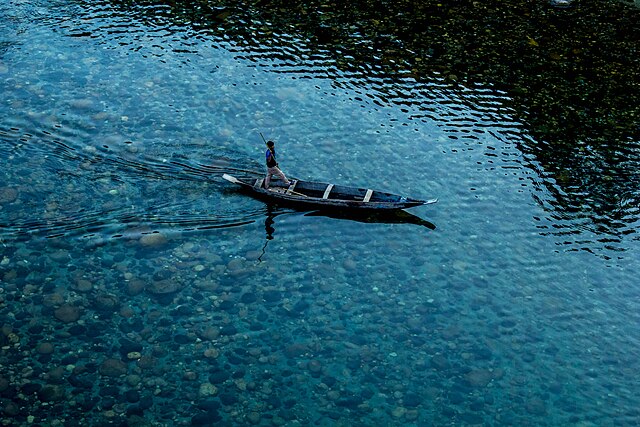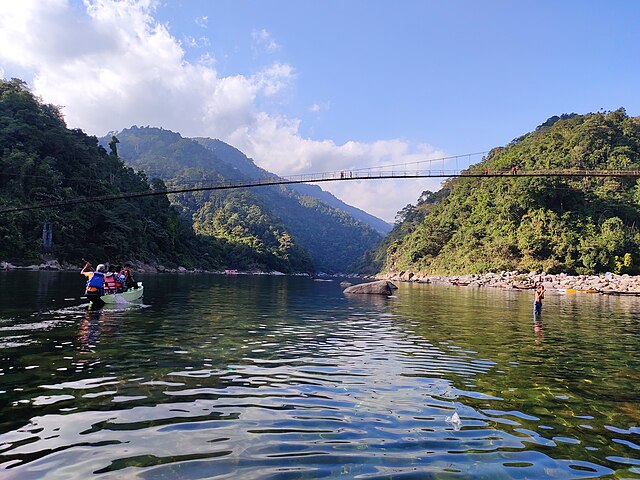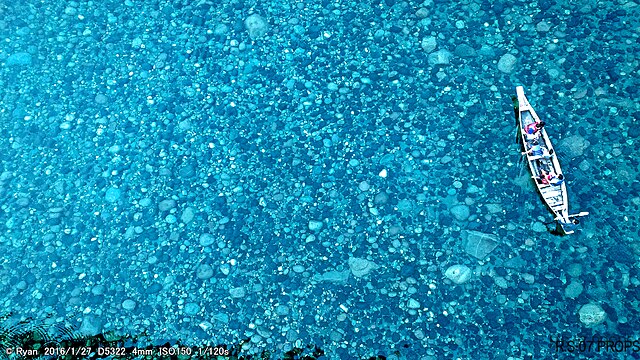Have you ever wondered what makes Dawki’s weather so special? Nestled in the heart of Meghalaya, this picturesque border town experiences a climate that’s as enchanting as its crystal-clear Umngot River. Understanding Dawki’s weather patterns isn’t just about checking the forecast – it’s about unlocking the secret to experiencing this gem at its absolute best.
Meghalaya’s weather remains unpredictable throughout the year, and Dawki is no exception. This unpredictability adds an element of surprise to every visit, making each trip a unique adventure. Whether you’re planning to witness the famous transparent waters or explore the surrounding landscapes, knowing what Mother Nature has in store can make or break your experience.
The weather in Dawki isn’t just a backdrop to your vacation – it’s the main character that determines everything from water clarity to accessibility of attractions. Think of it as nature’s own scheduling system, where timing your visit right can transform a good trip into an unforgettable one.
Understanding Dawki’s Geographic Influence on Weather

Location and Altitude Impact
Dawki’s strategic location in the West Jaintia Hills district plays a crucial role in shaping its weather patterns. Situated at a moderate altitude, the town enjoys a more temperate climate compared to the plains, yet remains accessible and comfortable for most visitors throughout the year.
The elevation provides natural air conditioning, keeping temperatures pleasant even during what would typically be scorching summer months elsewhere in India. This geographic advantage means you won’t find yourself battling extreme heat, making outdoor activities more enjoyable year-round.
Proximity to Bangladesh Border
Being a border town with Bangladesh, Dawki receives weather influences from both Indian and Bangladeshi climate systems. This unique positioning creates microclimates that can surprise even seasoned weather watchers. The proximity to international borders often means weather systems move differently here, creating pockets of varied conditions within short distances.
Seasonal Weather Patterns in Dawki
Winter Weather (November to February)
Winter in Dawki is like nature’s perfect gift to travelers. November to February is the best time to visit Dawki for the most clear view of the Umngot River. During these months, the weather creates the perfect storm of conditions – if you can call pleasant temperatures and minimal rainfall a storm!
Temperature Ranges in Winter
Winter temperatures in Dawki typically hover between a comfortable 15°C to 28°C, making it ideal for exploring the town’s attractions and enjoying activities like boating on the Umngot River. These moderate temperatures mean you can spend entire days outdoors without feeling uncomfortable.
Morning temperatures might dip to around 10-12°C, creating that crisp, refreshing air that makes you want to jump out of bed and explore. As the day progresses, temperatures climb to pleasant levels perfect for photography, hiking, or simply lounging by the river.
Rainfall and Humidity Levels
Winter brings the blessing of minimal rainfall to Dawki. During those months, there is only a little rain in the area which makes water in that river so transparent that it seems as if boats are floating in the air. This reduced precipitation is what creates the magical transparency of the Umngot River.
Humidity levels drop significantly during winter, making the air feel fresh and comfortable. You won’t find yourself dealing with the sticky, oppressive humidity that characterizes many tropical destinations during their peak seasons.
Summer Climate (March to June)
Summer in Dawki defies expectations. Summers are not much hot here as the rest of the other places from north India, making it another excellent window for visiting this beautiful destination.
Peak Summer Temperatures
Temperatures usually average around 25-30⁰C, and may even be slightly lower during times of heavy rainfall. These temperatures are remarkably pleasant compared to the sweltering heat that grips much of India during summer months.
The moderate summer temperatures mean you can still enjoy outdoor activities without the exhaustion that comes with extreme heat. Early mornings and late afternoons become prime time for exploration, while midday temperatures remain manageable.
Pre-Monsoon Conditions
As summer progresses toward monsoon season, you might notice increased humidity and occasional afternoon showers. These pre-monsoon conditions actually add to the charm, creating dramatic cloud formations and that fresh, rain-washed air that photographers dream of.
Monsoon Season (July to October)
Monsoon season in Dawki is nature’s dramatic performance. IMD forecasts intense rainfall in Assam and Meghalaya, and Dawki receives its fair share of this monsoon magic.
Heavy Rainfall Characteristics
During monsoon months, Dawki transforms into a lush, green paradise. The rainfall is typically intense but often comes in bursts rather than continuous downpours. This pattern means you might experience heavy rain for a few hours followed by clear skies – perfect for dramatic photography.
The rain brings life to every corner of Dawki, turning the landscape into various shades of emerald green. Waterfalls come alive, and the entire region buzzes with natural energy.
Impact on Tourism Activities
During the monsoons though, the water can go muddy in appearance and loses most of its crystal-clear quality. This is the trade-off for visiting during monsoon season – while the landscape becomes incredibly lush and beautiful, the famous transparent waters of Umngot River become cloudy.
However, don’t write off monsoon season entirely. The dramatic beauty of rain-soaked landscapes, the fresh mountain air, and the reduced crowds can make for a uniquely memorable experience.
Monthly Weather Breakdown

Peak Tourist Season Weather
The peak tourist season aligns perfectly with the best weather conditions. From November through March, Dawki experiences what locals call “perfect weather” – clear skies and minimal rainfall attract a large number of tourists seeking to experience the crystal-clear waters and picturesque landscapes.
During these months, you can expect consistent sunshine, comfortable temperatures, and predictable weather patterns that make planning activities easier. Morning mists create ethereal photography opportunities, while afternoon sunshine provides perfect lighting for capturing the famous transparent river waters.
Off-Season Climate Conditions
The off-season, particularly during heavy monsoon months, offers a completely different Dawki experience. While weather conditions might be less predictable, they’re also more dramatic and photogenic for those seeking unique shots.
Temperature variations become more pronounced during off-season months, and humidity levels rise significantly. However, this also means lush vegetation, full-flowing waterfalls, and an overall sense of natural abundance that peak season cannot match.
Best Time to Visit Dawki
Optimal Weather for River Activities
For the ultimate Dawki experience, particularly if you’re hoping to witness the famous “floating boats” phenomenon, timing is everything. This is the best time to explore the scenic beauty of this place in the months from March to June. During the summer season also the Umngot River water would look crystal clear and attracts more tourists.
The period from November to March offers the most reliable weather for river activities. During these months, you can plan boating trips, river walking, and photography sessions with confidence, knowing that weather disruptions are minimal.
Photography and Sightseeing Conditions
Photography enthusiasts will find the dry season irresistible. The combination of clear skies, excellent visibility, and crystal-clear river waters creates perfect conditions for capturing Dawki’s natural beauty. The soft winter light provides flattering illumination for both landscape and portrait photography.
Dawki can be visited anytime of the year, and there is no fixed season or month for visiting it, but weather-conscious photographers typically prefer the November to March window for optimal shooting conditions.
Weather’s Impact on Umngot River
Crystal Clear Waters During Dry Season
The relationship between weather and water clarity in Dawki is fascinating. During dry months, reduced runoff means minimal sediment enters the river, creating those Instagram-famous crystal-clear waters that make boats appear to float in mid-air.
This clarity isn’t just about aesthetics – it’s about experiencing something truly magical. When weather conditions align perfectly, the river becomes so transparent that you can see the riverbed several feet below, creating an almost surreal boating experience.
Monsoon Effects on Water Clarity
Monsoon season tells a different story. Heavy rainfall increases surface runoff, carrying sediments into the river and reducing visibility. While this might disappoint those seeking the classic transparent water photos, it reveals another side of Dawki’s natural beauty.
The monsoon-fed river carries more volume and power, creating different recreational opportunities and showcasing the dynamic nature of this water body. Understanding these seasonal changes helps set appropriate expectations for your visit.
Planning Your Trip Around Weather Conditions
Packing Essentials for Different Seasons
Smart packing depends entirely on when you’re visiting Dawki. For dry season visits, lightweight cotton clothing, sun protection, and minimal rain gear suffice. However, always keep a light jacket handy, as mountain weather can change quickly.
Monsoon season visitors need waterproof gear, quick-dry clothing, and good waterproof bags for electronics. The key is layering – weather can shift from cool and misty to warm and humid within hours.
Weather-Related Travel Tips
Understanding local weather patterns helps you make better decisions during your stay. Morning hours often provide the best weather conditions for outdoor activities, regardless of season. Weather apps might not always be accurate for this specific location, so staying flexible with your itinerary is crucial.
Local weather wisdom suggests checking cloud formations and wind patterns rather than relying solely on digital forecasts. Dawki’s microclimate can surprise even meteorologists, so being prepared for rapid weather changes serves travelers well.
Conclusion
Dawki’s weather is as captivating as its famous crystal-clear river. Understanding these climate patterns transforms you from a casual visitor into an informed traveler who can maximize every moment of your stay. Whether you choose the reliable charm of winter months or the dramatic beauty of monsoon season, Dawki’s weather adds its own unique flavor to your adventure.
The key lies not in finding perfect weather – because in Dawki, every season has its own perfection – but in aligning your expectations and preparations with nature’s rhythm. Remember, the best weather for your Dawki experience is the one that matches what you’re hoping to discover in this magical corner of Meghalaya.
Frequently Asked Questions (FAQs)
1. What is the best month to visit Dawki for crystal clear river waters?
November through February offers the clearest river waters, as minimal rainfall during these months reduces sediment runoff, creating the famous transparent effect that makes boats appear to float in air.
2. Does Dawki experience extreme weather conditions?
No, Dawki enjoys a moderate climate throughout the year. Even summer temperatures rarely exceed 30°C, and winter temperatures seldom drop below 10°C, making it comfortable for visitors year-round.
3. How does monsoon season affect tourism activities in Dawki?
Monsoon season (July-October) brings heavy rainfall that clouds the river water and can limit some outdoor activities. However, it transforms the landscape into a lush green paradise, offering different but equally beautiful experiences.
4. Can I visit Dawki during monsoon season?
Yes, you can visit Dawki during monsoon season, but expect muddy river waters and frequent rainfall. This season offers dramatic landscapes, fewer crowds, and unique photography opportunities for those who don’t mind the rain.
5. What should I pack for different seasons in Dawki?
For dry season (November-March): light cotton clothes, sun protection, and a light jacket. For monsoon season (July-October): waterproof gear, quick-dry clothing, and waterproof bags for electronics. Always pack layers as mountain weather can change rapidly.

